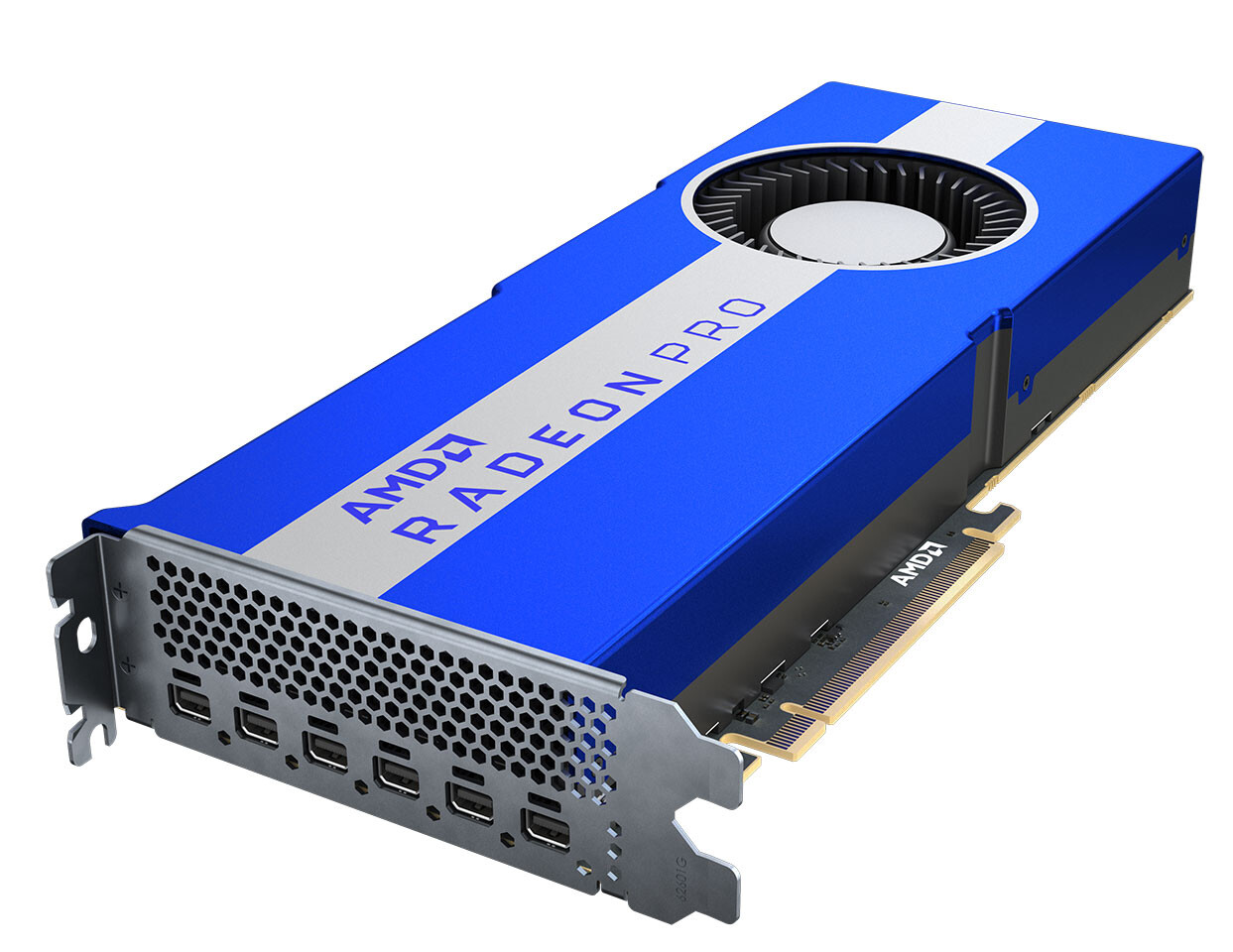https://www.techpowerup.com/266992/amd-announces-radeon-pro-vii-graphics-card-brings-back-multi-gpu-bridge AMD today announced its Radeon Pro VII professional graphics card targeting 3D artists, engineering professionals, broadcast media professionals, and HPC researchers. The card is based on AMD's "Vega 20" multi-chip module that incorporates a 7 nm (TSMC N7) GPU die, along with a 4096-bit wide HBM2 memory interface, and four memory stacks adding up to 16 GB of video memory. The GPU die is configured with 3,840 stream processors across 60 compute units, 240 TMUs, and 64 ROPs. The card is built in a workstation-optimized add-on card form-factor (rear-facing power connectors and lateral-blower cooling solution).
What separates the Radeon Pro VII from last year's Radeon VII is full double precision floating point support, which is 1:2 FP32 throughput compared to the Radeon VII, which is locked to 1:4 FP32. Specifically, the Radeon Pro VII offers 6.55 TFLOPs double-precision floating point performance (vs. 3.36 TFLOPs on the Radeon VII). Another major difference is the physical Infinity Fabric bridge interface, which lets you pair up to two of these cards in a multi-GPU setup to double the memory capacity, to 32 GB. Each GPU has two Infinity Fabric links, running at 1333 MHz, with a per-direction bandwidth of 42 GB/s. This brings the total bidirectional bandwidth to a whopping 168 GB/s—more than twice the PCIe 4.0 x16 limit of 64 GB/s.
At this time only Radeon Pro Render supports combining memory, but AMD is confident that more applications will add support. Since AMD's neither mentioned "cache coherent", nor "virtual memory", it seems this is similar to DX12 multi-GPU, where applications can combine resources from multiple adapters in the system. Running Infinity Fabric Link involves using a $199 IF bridge card across two IFIS fingers on top of the card. Also, unlike the Radeon VII, AMD unlocked PCI-Express gen 4.0 support. The card features a PCI-Express 4.0 x16 host interface, which should come in handy when you use two of them on an AMD Ryzen 3000-powered workstation, where gen 4.0 x8 would let you overcome system bus bottlenecks. The card also features memory ECC.
Where the Radeon Pro VII hopes to dent NVIDIA's market-share is with pricing. The card is priced at USD $1,899 (SEP), about 20% cheaper than NVIDIA Quadro RTX 5000, and is targeting academia (universities and institutes), emerging design- and engineering firms, and HPC researchers, who may find the lower price attractive, especially when you consider that a pair of this card, along with a $200 bridge, would beat a Quadro GV100 in pricing and throughput ($8,999). AMD considers the card's main competition to be the Quadro RTX 5000, and is claiming performance gains over the NVIDIA card in several CAE, broadcast media- and HPC applications.
For a professional card I think the price is very good. I also think it is not a coincidence that AMD is announcing this one day before the NVIDIA GTC which takes place tomorrow.
